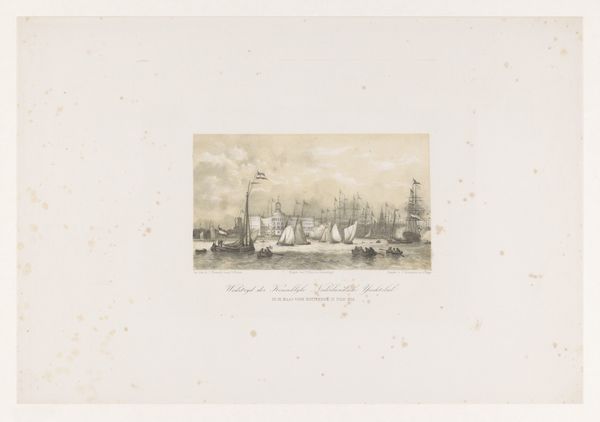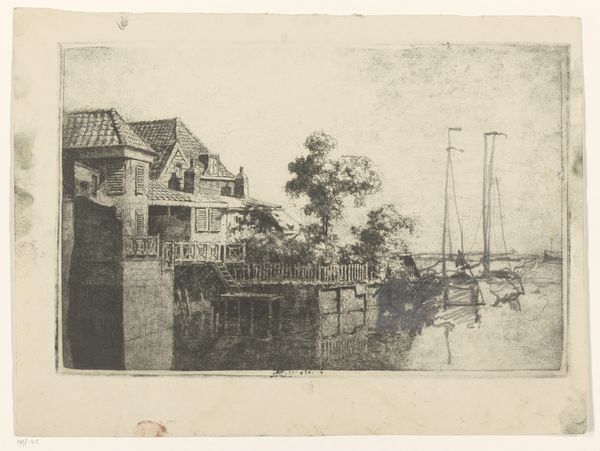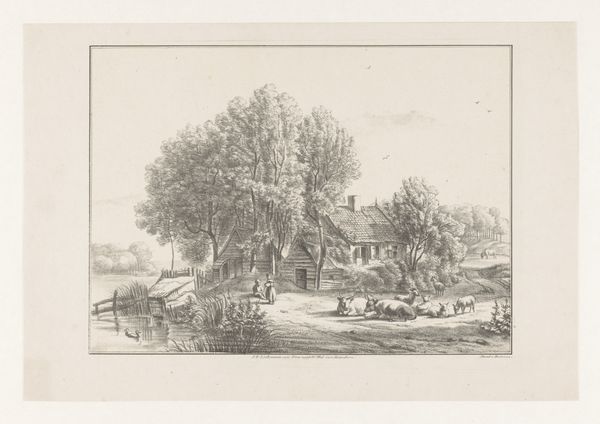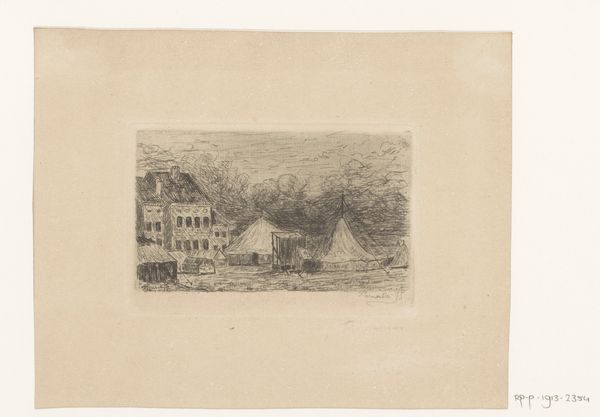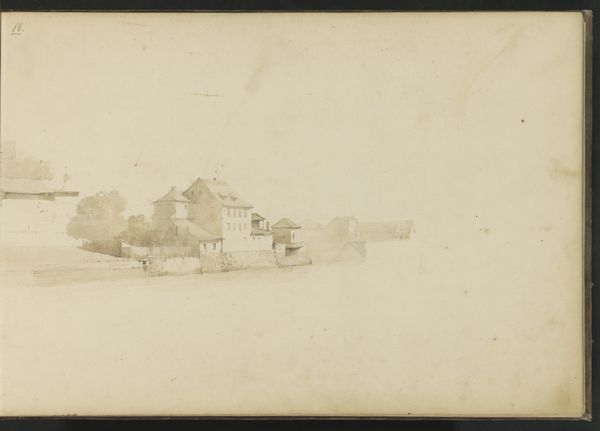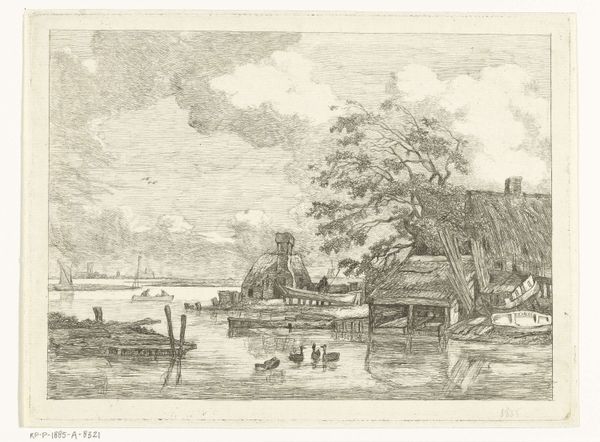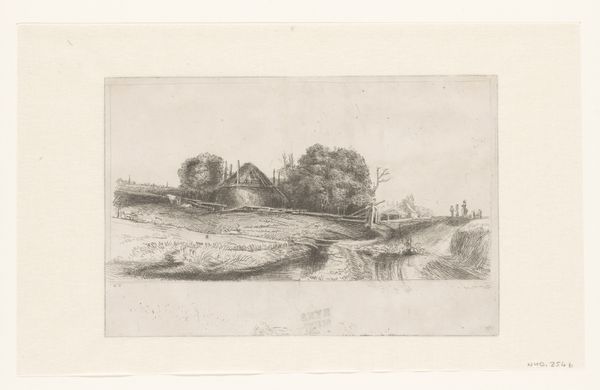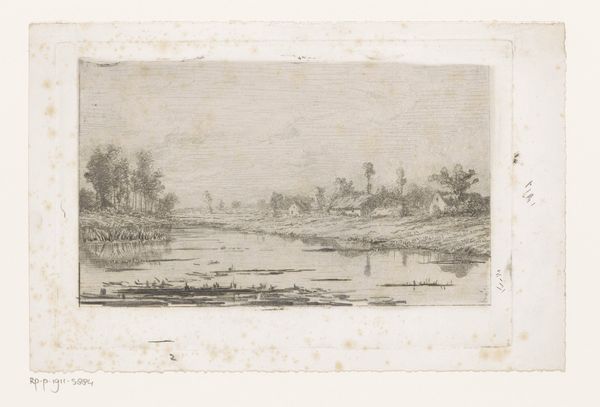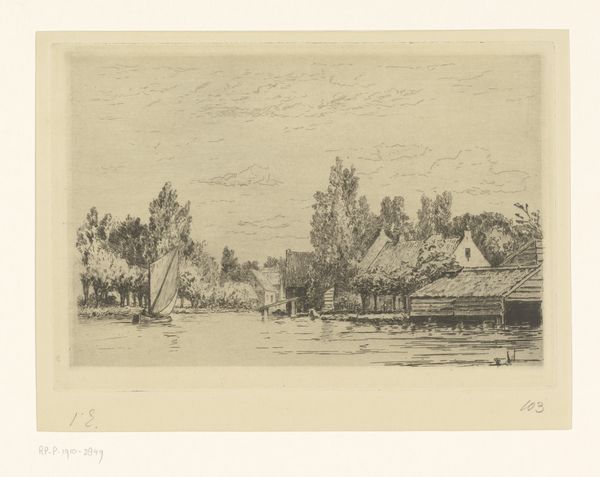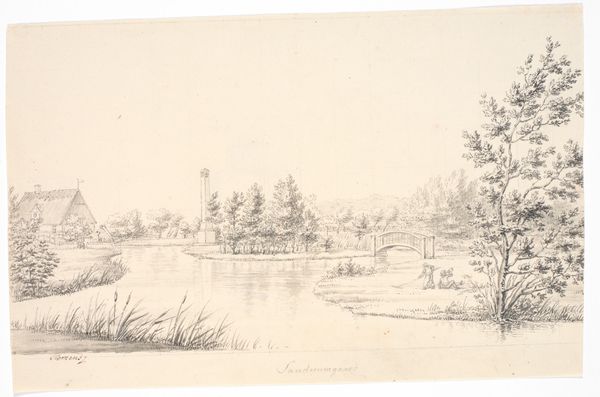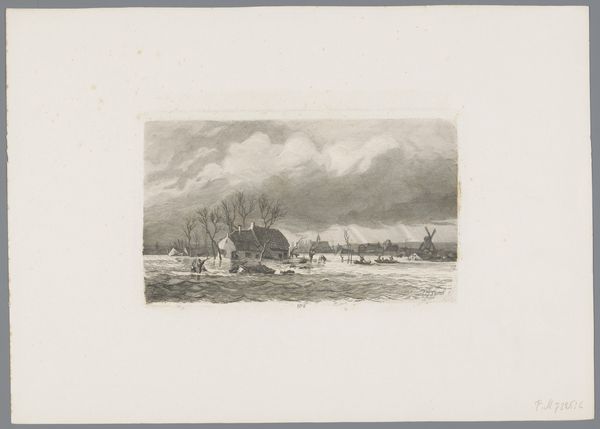
print, etching
#
dutch-golden-age
# print
#
etching
#
landscape
#
etching
Dimensions: height 79 mm, width 119 mm
Copyright: Rijks Museum: Open Domain
Curator: Wijnand Otto Jan Nieuwenkamp, working probably between 1901 and 1911, offers us "Huis aan het water in Oude Wetering," which translates to "House on the Water in Oude Wetering," an etching on paper rendered in delicate brown tones. Editor: It feels like stepping back in time. A humble scene, a solitary house reflected in the water. The light is so soft, creating an almost dreamlike atmosphere. It’s the simplicity that draws me in. Curator: Absolutely. The artwork captures the essence of Dutch landscape traditions, especially reflecting back to the Dutch Golden Age, where scenes of daily life and the relationship between people and their environment were often the focus. It also comes on the heels of major social movements, as urban landscapes swelled during the early industrial revolution in the Netherlands, this captures a feeling of pastoral longing. Editor: The reflection on the water creates a sense of fluidity. The technique, that fine etching, it's reminiscent of earlier printmakers, capturing the beauty of a simpler, more grounded life. And look how the lines suggest the texture of the thatched roof or the rough bark of the trees. The trees on the horizon give it this perspective to an untouched nature, a perfect picturesque home. Curator: Considering the sociopolitical climate of the Netherlands in the late 19th and early 20th centuries, such rural imagery can be viewed as a counterpoint to industrial expansion and urbanization. Artists often looked to the countryside for authenticity, creating a narrative around national identity rooted in land and tradition. There are some boats tethered along the embankment as well. What does this signify? Is this a symbol of life and how we are all intertwined with nature's movements? Or the idea of the landscape constantly evolving? Editor: Maybe both. It shows the intersection, dependence of daily routines tied into nature. The work makes you consider this place as one to return back to as a point of mediation in everyday life. I am transported in this still landscape in what this etching evokes in capturing one of the Netherlands treasured landscapes. Curator: Yes, thinking about the role of art institutions in promoting specific images of national identity and history...works like this provide invaluable insight into the period's aspirations. And these idyllic images tend to mask socioeconomic and class-based divides during periods of high migration to larger metropoles in Europe at this time. Editor: True. It serves as a gentle reminder of our past but also provokes a needed conversation, reflecting on our social contexts today.
Comments
No comments
Be the first to comment and join the conversation on the ultimate creative platform.

